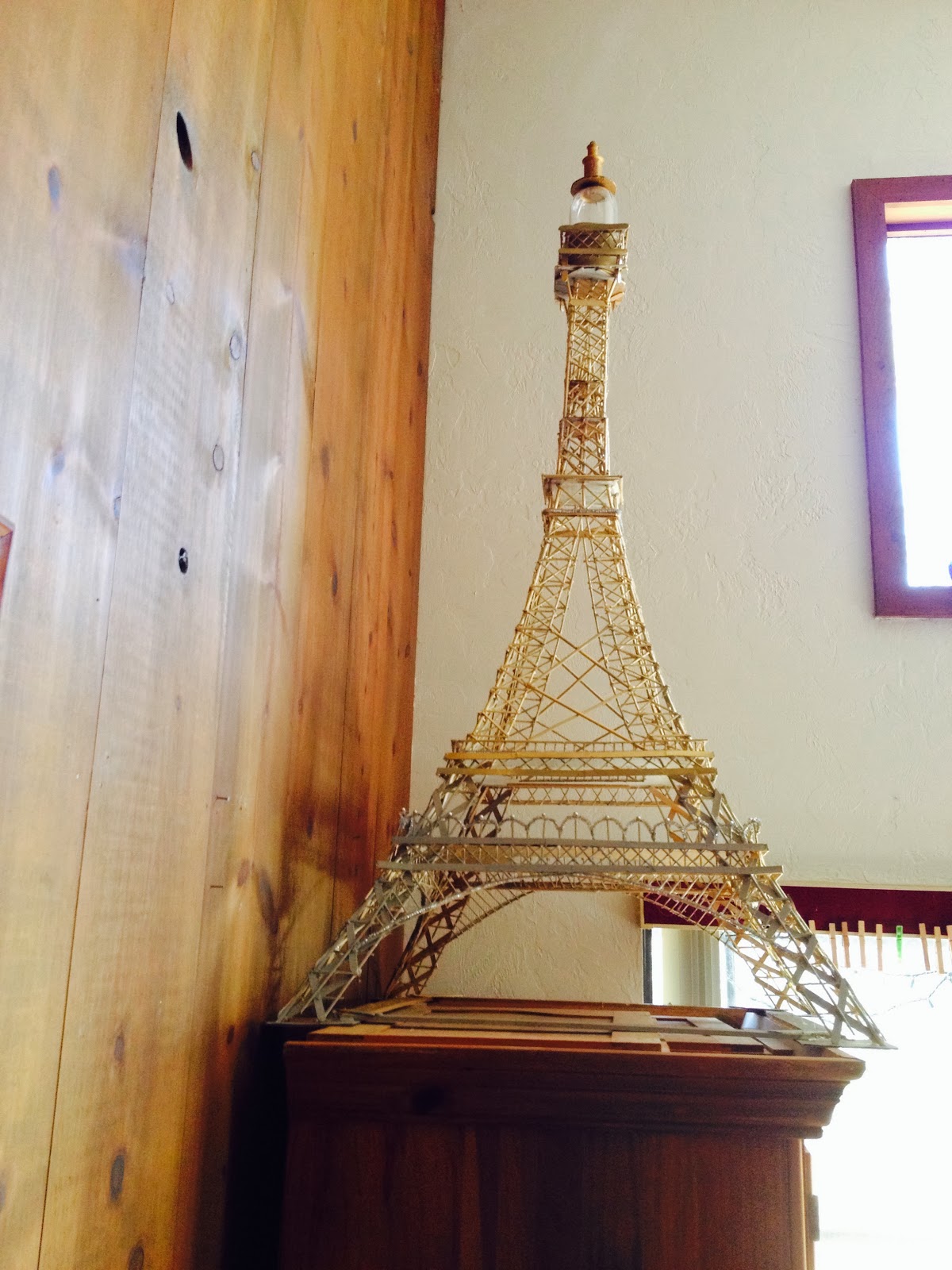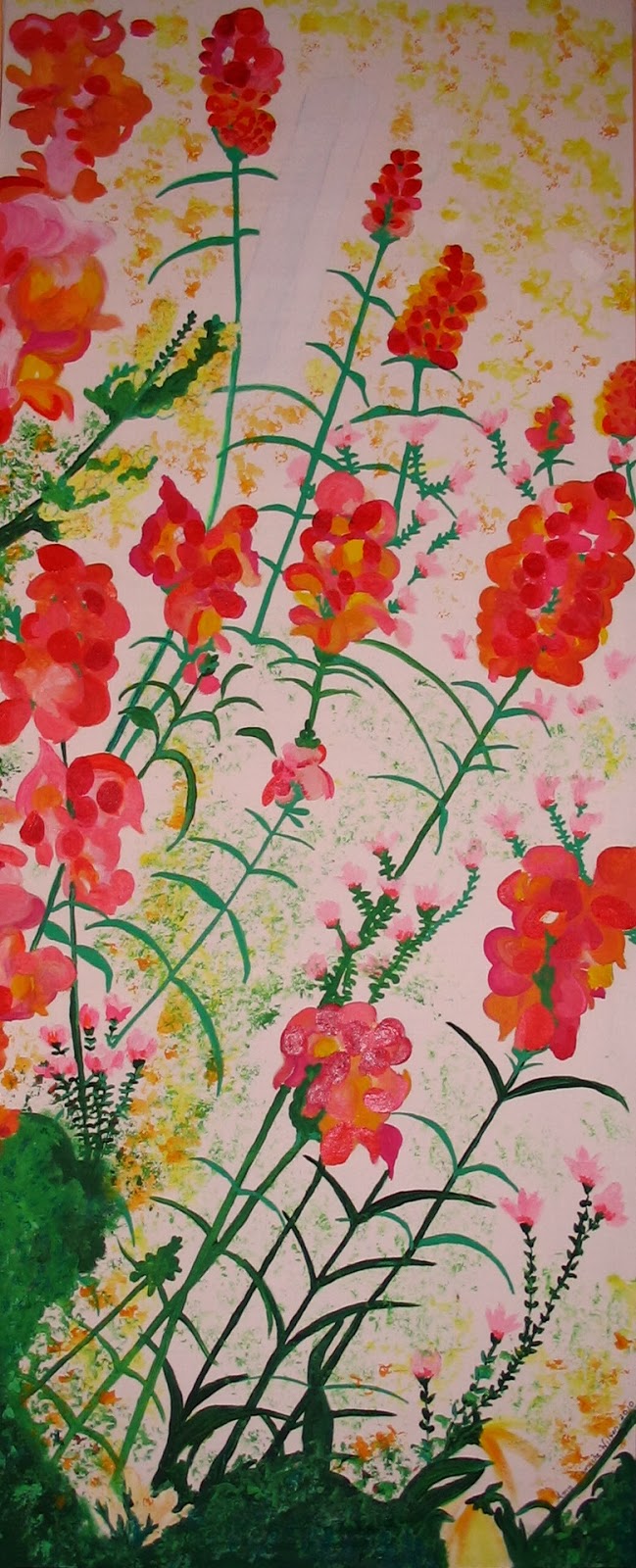Hi again, so what did I do this time? Good grief I keep busy. My husband has developed a new expression to get my attention. It is "Amy, move away from the tower!" I will explain here:
I am in a group of women who prepare a table for a fund raiser to benefit the Girls Club of Alachua County. Each year we decorate a table pertaining to a theme. This year our table captain wanted to do "April in Paris"! She wanted the Eifel Tower for the center piece.
The day after brainstorming session withe the ladies, and some engineering analysis from my super fabulous husband, I set to work. ( He also went to Lowes with me, late that night,to get supplies.) Here are some pictures I used as I set to work:

Using a scaled picture from the internet, we developed a scale with four main floors: base, one, two,three, top.

Above are some of our high tech proportions . In order to get a well proprtioned tower , with an 18 inch base, my tower would be incredibly unstable. I had to modify. I had to increase the base substantially.

The gray first floor shown above was initially suppose to be the ground floor 18x18 ...not anymore!
The finished tower was about 60 inches tall and 29 inches square!
At this point I was thinking of painting the lower cardboard box to look like the lower part of the Eiffel Tower, but as you will see, I changed my mind on that too.
Above, I have inserted the 48 inch long flexible wood dowels, from the late night trip to Lowes, through small holes pushed into two pieces of square corrugated cardboard, (18 inch x 18 inch) and (abt 10 inch x 10 inch). Maneuvering the sticks and "floors" in such a way as to create a stable structure. At this point I noticed 2 things:
1) I needed a more stable base and
2) The sticks really wanted to spin around themselves and lock at the top. I am sure there is an engineering explanation for this twisting action.
At this point,I built the base from some slats I had in the garage and built anchor pads for each corner.
Above you see I used popsicle sticks and a hot glue gun to start my corners.
Above is where I developed a tower top and used an extra piece or two of cardboard to keep the twisted effect in check.
These upper levels wanted to spin . I cross braced and used multiple cardboard pieces to stabilize.
Now, I set to work with these:
And these in view:
And developed this:
I am beginning to think my tower is too short. I had to make it taller so I built a shelf to put the upper tower on:
If you look carefully in the above photo you can see where the 48 inch sticks come together and my upper tower is a separate piece made to look otherwise.
Below is the tower before the ground floor cross beams and viewing platform rails had been completed.
I did cut out the middle of each floor using an exacto knife
Below I begin the first floor arches and start the side rails. Toothpicks were stuck through each floor and stabilized with hot glue and frontage rails.
And I used chop sticks for cross braces, below.
Below shows one floor cut out.
At this point in this adventure, its late:
And time for bed . My husband says to me , with polarizing but very clear anti OCD direction, "Amy, move away from the tower!" This is the slogan for 2014 to redirect me from one activity to another. We laugh about this.
The rest of the pictures begin to show and then do show the finished product. Below I started to prime it with gray paint.
Pipe cleaners and mardi gras beads were used to mimic rails on the viewing platforms.
We did win trophy for Most Elegant. It really was fun. I have an idea for next year..... No wait , I am up to something else now.




















































